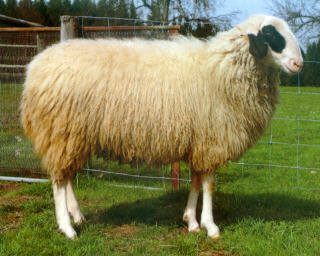Type the name of the breed you're looking for below
[wpdreams_ajaxsearchlite] Don't see the breed your're looking for? Click here and let us know!
Brillenschaf sheep
| Place of Origin | Germany |
| Origin | Also Known By: Spectacles Sheep. The Brillenschaf is a member of the alpine mountain sheep breeds, and is also known as Kaernter Brillenschaf or Spiegelschaf. In the 18th century, the Kaernter Steinschaf of Austria was crossed with the Italian Paduaner- and Bergamaskerschaf. In comparison, the Bergschaf was only a cross between Steinschaf and Bergamaskerschaf. The Paduaner Schaf came from the coastal areas of Upper Italy. It resembled the Bergamaskerschaf except that it was smaller and had finer wool. Therefore, before the introduction of the Merino, the Paduaner Schaf had been used to improve the wool quality in landraces of Swabia and Franconia. The breeding center of the Brillenschaf was Seeland, a town in southern Kaernten which belongs to Slovenia today. Therefore the Brillenschaf is also called Seelaenderschaf. The breed spread all the way to the Austrian Steiermark and into Germanys southeastern Bavaria. In the 1930s when efforts were made to unify all mountain sheep breeds, the Brillenschaf disappeared from Austria. Remnant populations could be located in southeastern Upper Bavaria (250 sheep), in Italys Southern Tyrol (500 sheep), and in Slovenia. The Bavarian and Southern Tyrolean sheep were alike, whereas the Slovenian sheep were missing the characteristic, black coloring around the eyes and on the ears. |
| Purpose | Meat, Fiber |
| Characteristics | The large, white Brillenschaf has evenly distributed, black pigmentation around the eyes, which gives it the appearance to be wearing glasses -- hence the name spectacles sheep. The bottom one or two thirds of the ears are also black. Upper and lower lip and its chin can have black pigmentation spots. The head has a Roman nose profile, is narrow, and free of wool and horns. The hanging ears are broad and large. Firm ankles and hard hoofs support fine-boned legs. Breeding is non-seasonal and can be done three times in two years. Twins are the norm. The white fleece has a tight staple and a silky appearance, which gave it the second name: Spiegelschaf (Mirrorsheep). The fiber diameter is 32-35 microns. The hardy, frugal Brillenschaf can cope with high precipitation and is expert in climbing, therefore it is used for grazing high alpine areas which are inaccessible to cows. |
| Other Considerations | The Brillenschaf has been accepted into the Bavarian Sheep Registry in 1990 and the State of Bavaria subsidizes the preservation of this very endangered breed that used to be at home there in the last century. In 1993 there were 8 registered breeders with 8 breeding rams and 100 ewes. |



